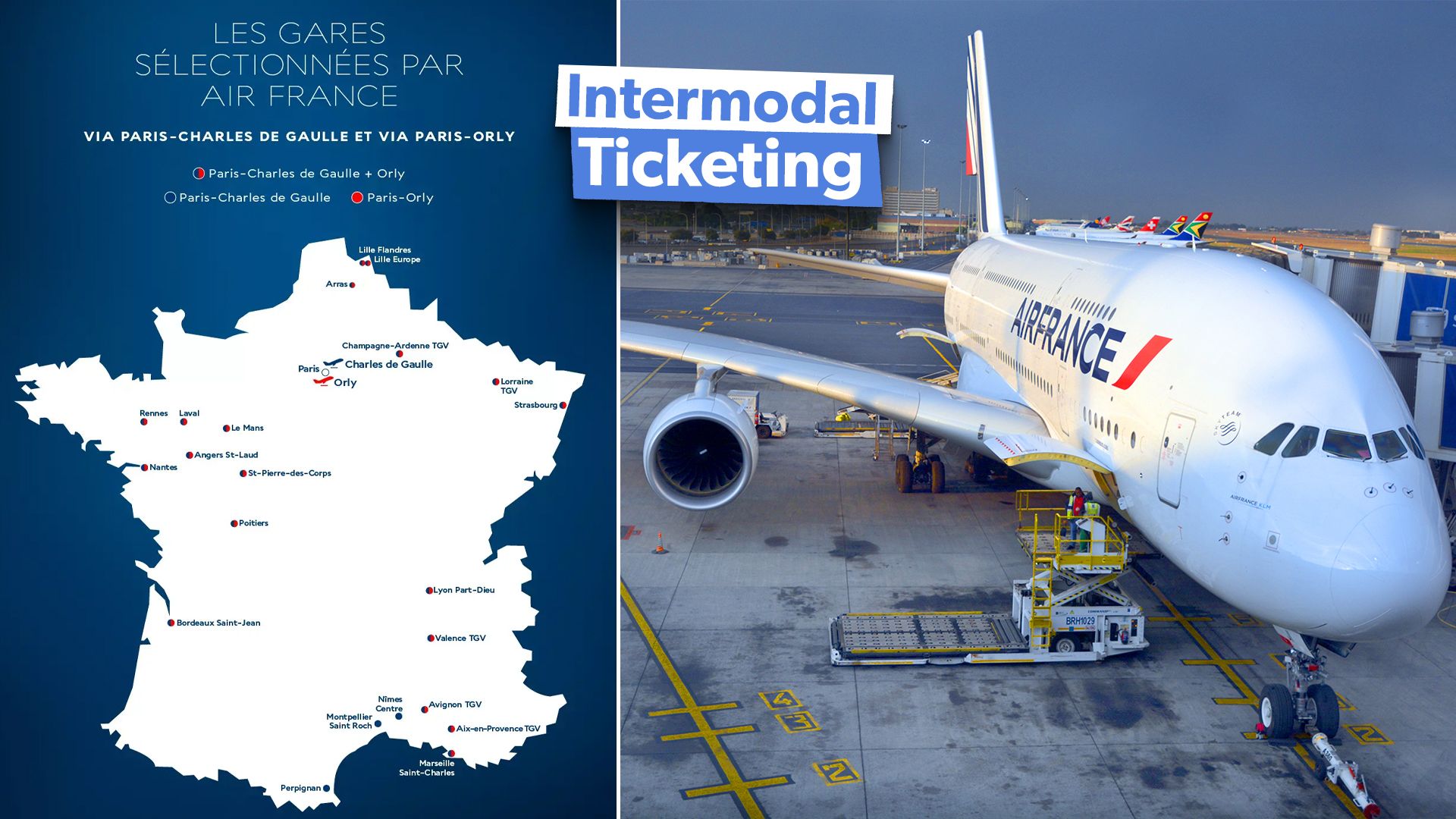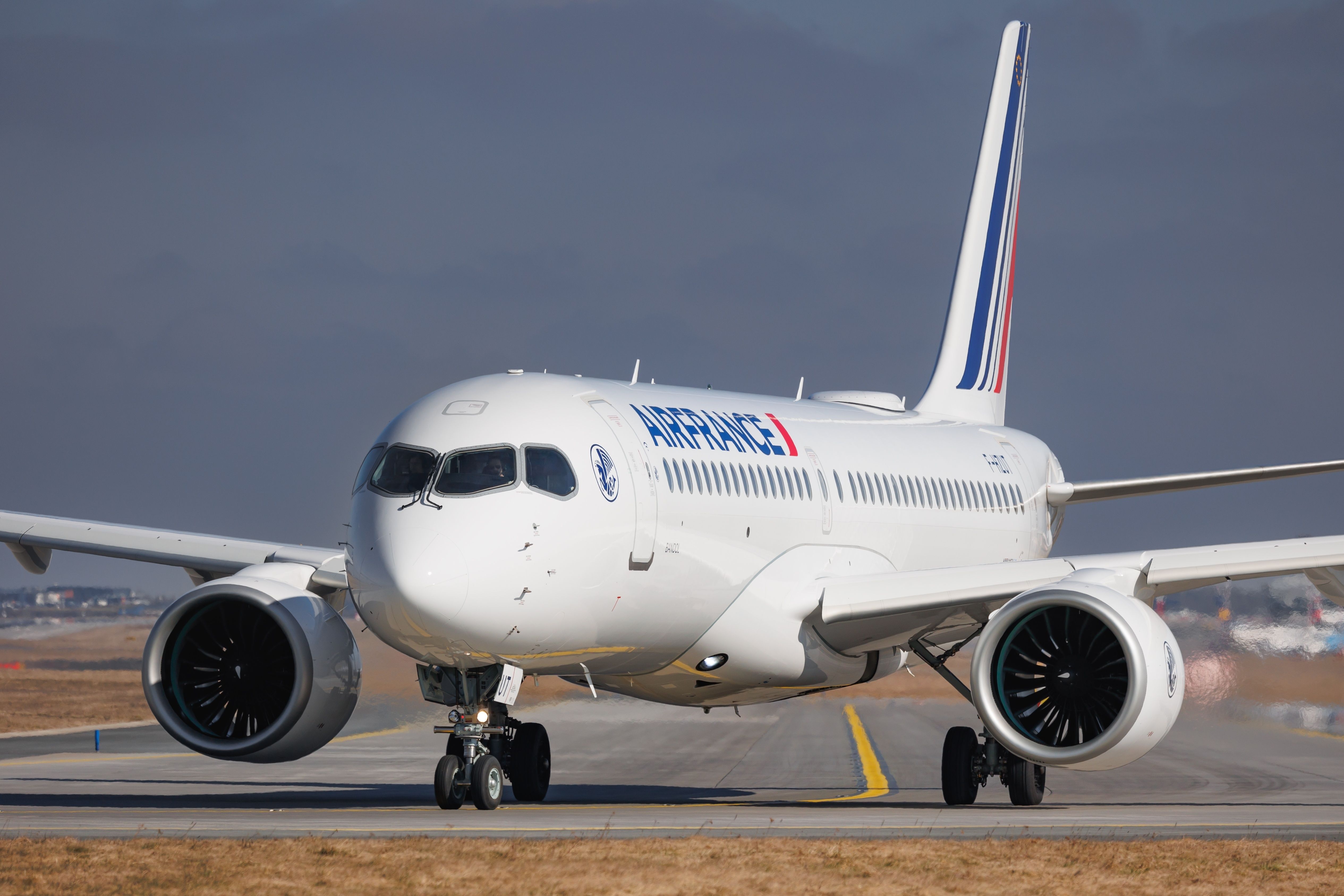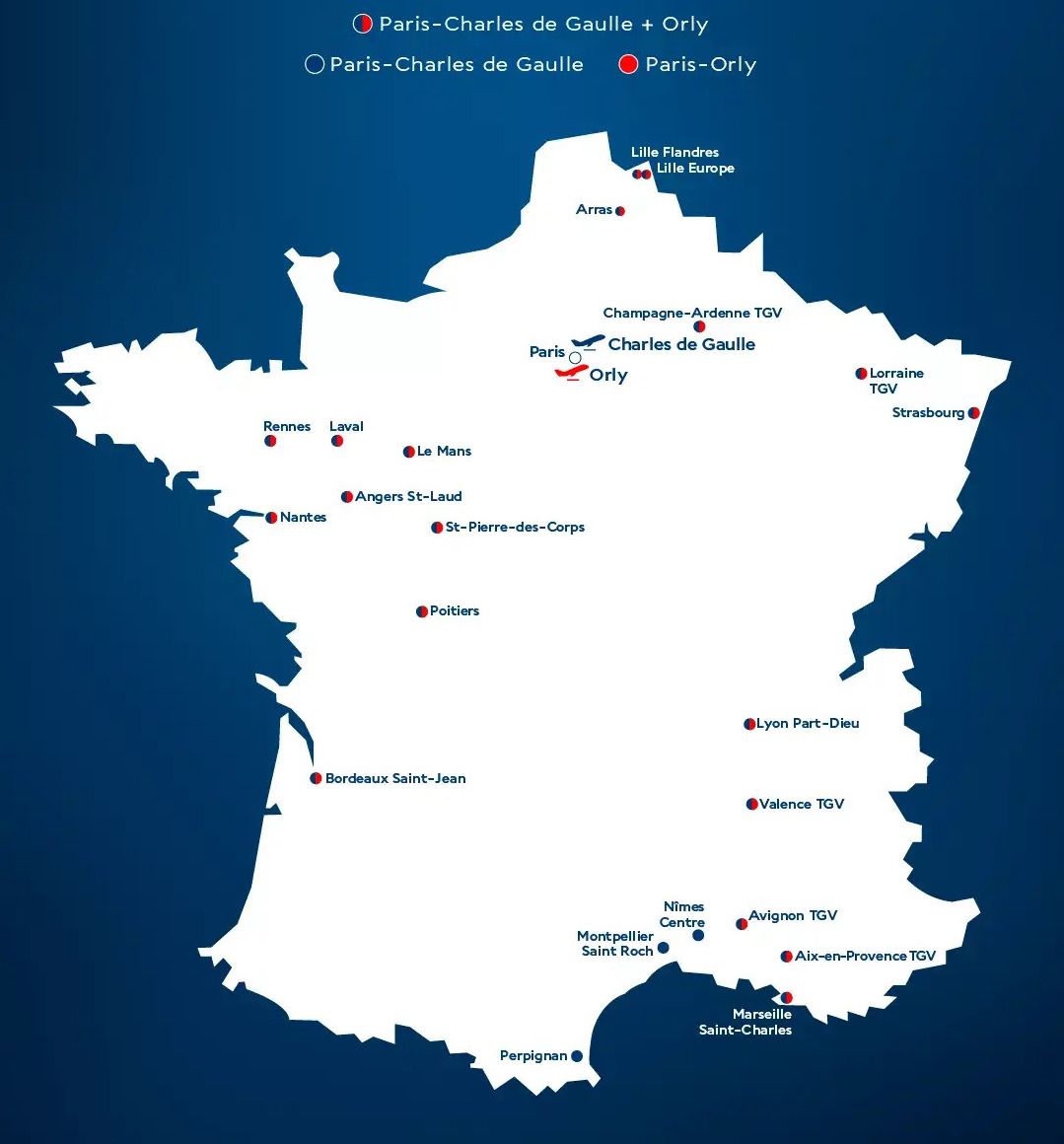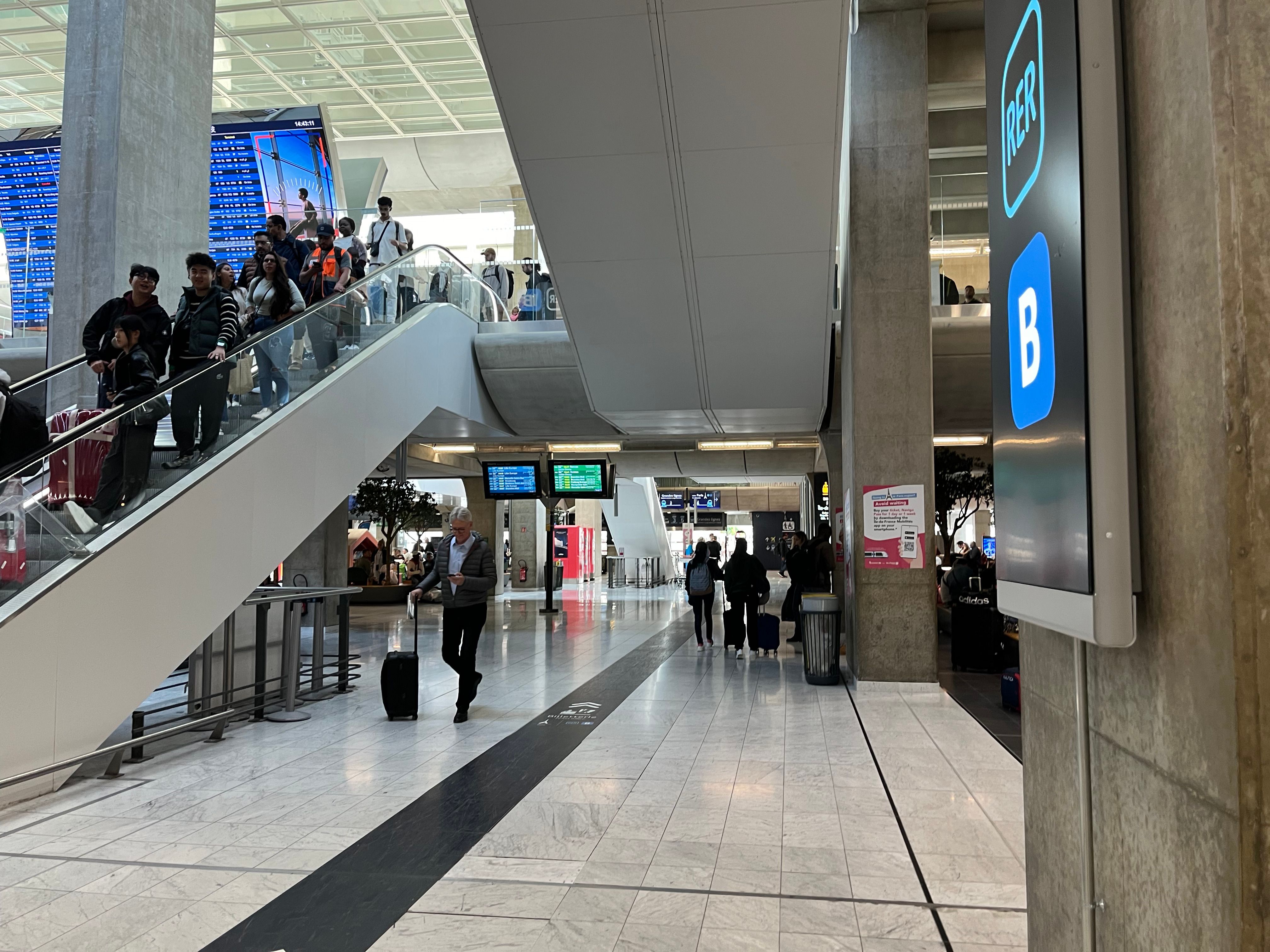‘Train + Air’ and ‘Air&Rail’ are Air France’s two intermodal options that combine a flight ticket with a train ticket in a single reservation. In essence, the offer allows passengers to include train journeys in a single booking, virtually as if it were a connecting flight. It is meant to provide simpler overall travel while providing additional options on the carrier’s network by using the train companies’ routes.
Photo: kamilpetran | Shutterstock
Equally, the reduced environmental impact of avoiding the plane is also a big plus. As the train connections included in the offer continue to expand, we examine exactly how it works and, crucially, whether it is worth it.
A popular project
First launched in 1995, the Train + Air service allows passengers on 12 airlines to connect onto trains to 22 cities of which one is Brussels (Belgium) and the remainder are in France. The intermodal connection to the Belgian capital is labeled as Air&Rail. The trains are operated by the French state-owned railway company, SNCF. The 12 airlines that offer this option on their booking platforms are listed below.
- Air France
- Air Austral
- Air Caraïbes
- French Bee
- Corsair
- Air Tahiti Nui
- Air Transat
- Royal Jordanian
- Vietnam Airlines
- Emirates
- Etihad
- Qatar Airways
According to Le Figaro, the scheme is used by more than 160,000 passengers per year. It is offered only from two French airports, which are inevitably the busiest in the country: Paris Charles De Gaulle Airport
(CDG) and Paris Orly Airport
(ORY). Air France’s system allows passengers to book flights to or from destinations in France served by SNCF trains that depart from these two airports.
‘Train + Air’: Domestic destinations
Key things to keep in mind:
- Connections through Paris-Orly require a 35-minute taxi drive in between. This service is offered free-of-charge by Air France.
- Bag transfers are not automatic. Passengers have to collect their luggage and manually transport it from the plane to the train and vice versa.
Photo: Air France
The network within France is expansive. Thanks to the extensive train offering from Paris, passengers can choose to book a ticket from Vancouver to Nîmes or New York to Lille, for instance.
|
Domestic destinations (by train) |
|
|---|---|
|
Paris Charles de Gaulle |
Lille Flandres, Lille Europe, Champagne-Ardenne TGV, Lorraine TGV, Strasbourg, Le Mans, St-Pierre-des-Corps, Angers St-Laud, Nantes, Laval, Rennes, Poitiers, Bordeaux Saint-Jean, Perpignan, Montpellier Saint Roch, Nîmes Centre, Marseille Saint-Charles, Avignon TGV, Aix-en-Provence TGV, Valence TGV, Lyon Part-Dieu |
|
Paris Orly |
Lille Flandres, Lille Europe, Champagne-Ardenne TGV, Lorraine TGV, Strasbourg, Le Mans, St-Pierre-des-Corps, Angers St-Laud, Nantes, Laval, Rennes, Poitiers, Bordeaux Saint-Jean, Marseille Saint-Charles, Avignon TGV, Aix-en-Provence TGV, Valence TGV, Lyon Part-Dieu |
To book a ticket, Air France says that you need to “enter the name of your departure or arrival station on the main screen as if it were an airport.” When the booking includes a domestic train connection, it is known as “Train + Air”.
Since November 2022, passengers do not need to go to a service desk in Paris to collect their onward train tickets. Instead, customers can download their e-ticket 30 hours before their trip. Those who forgot to or were unable to can go to the SNCF terminals at the respective stations.
For journeys that begin by train, passengers can board the train directly with their e-ticket up to 2 minutes before departure. If the connecting airport is Paris-Orly, passengers will be driven by taxi (courtesy of Air France) from Massy TGV station to the airport. The driver “will be waiting for you with a signboard with your name on it”. Convenient indeed, but given that it is a 35-minute drive, it begs the question: does the taxi requirement just complicate the journey further?
Things are simpler at Paris’ main airport, though. The train terminal for flights departing (and arriving from) Paris Charles de Gaulle is located in Terminal 2 itself.
Photo: Dillon Shah | Simple Flying
One of the downsides of this service is that baggage transfer is not automatic. In other words, hold luggage has to be manually transported from the train to the bag-drop desks in Paris. The same goes the other way around: once landed in Paris, passengers have to collect their bags from the luggage belts before heading to the train station.
‘Air&Rail’: Belgium-bound
Key things to keep in mind:
- On the Paris to Brussels leg, the train ticket can only be collected at the SNCF terminal at the Paris Charles de Gaulle train station.
- On the return leg, a lounge is provided free of charge in Brussels. It is tough to find as it is hidden around the back end of the station and does not offer food or beverages. It is more of a waiting room.
- Checked baggage is taken care of on the leg from Brussels to Paris. The same is not offered on the Paris to Brussels sector.
Train connections to and from Brussels fall under the Air&Rail label. SNCF offers connections between Bruxelles-Midi train station and CDG, with the onward flight operated by Air France. In the case that the ticket sold by Air France includes a flight that lands at ORY with the train from CDG to Brussels, passengers have to make their own way between the two airports. It is recommended to avoid that as it is quite a hassle.
As with the domestic connections, passengers have to collect their baggage first if transiting from the plane to the train. In addition, as it is a service to Brussels, tickets for the train are issued at the SNCF terminal itself and not automatically at the point of origin. On the return leg, the ticket issued at the dedicated Air&Rail Terminal in Brussels includes the flight journey as well. A bag drop service is also offered, removing the need to collect it again at CDG.
I tried the intermodal ticket option on a journey from Nice to Brussels to go and visit Emirates’ refurbished 777-300ER. I did not have any checked luggage which made things easier. However, because trains to Brussels went roughly every two to three hours, I had to wait for the train for quite a while at CDG.
I also had to go to the Air&Rail office at the SNCF terminal to collect by ticket. While it took no time, it was still a bit annoying to have to do. Finally, in terms of the train journey itself, the seat was comfortable and the journey was fast.
I preferred my journey from Brussels to Nice, though. I went to the Air&Rail terminal at Bruxelles-Midi station, which was quite a distance to find.
Although you only need to arrive 30 minutes before the train, I was at the station an hour earlier just to be safe. I took advantage of the waiting area, which included ample seating, charging ports, and local magazines.
The staff were warm and friendly. Eventually, I made my way to the train, and before long, I was in Paris. As I was issued my boarding pass for the full journey in Brussels, I went straight to the departure gate, where I had to wait an hour before heading down south.
Is it worth it?
If you are looking to travel to Brussels, I have to admit it felt very inconvenient. While my return leg was simple and easy, the outbound journey took too long and was inconvenient. For destinations in France, it makes sense to take advantage of the Train + Air offer as it ensures you are protected in case of a delay in your flight or train, as Air France will put you on the next available service. While this is true for the Air&Rail offering too, it does have the added advantage of the e-ticket being issued up to 30 hours prior.




